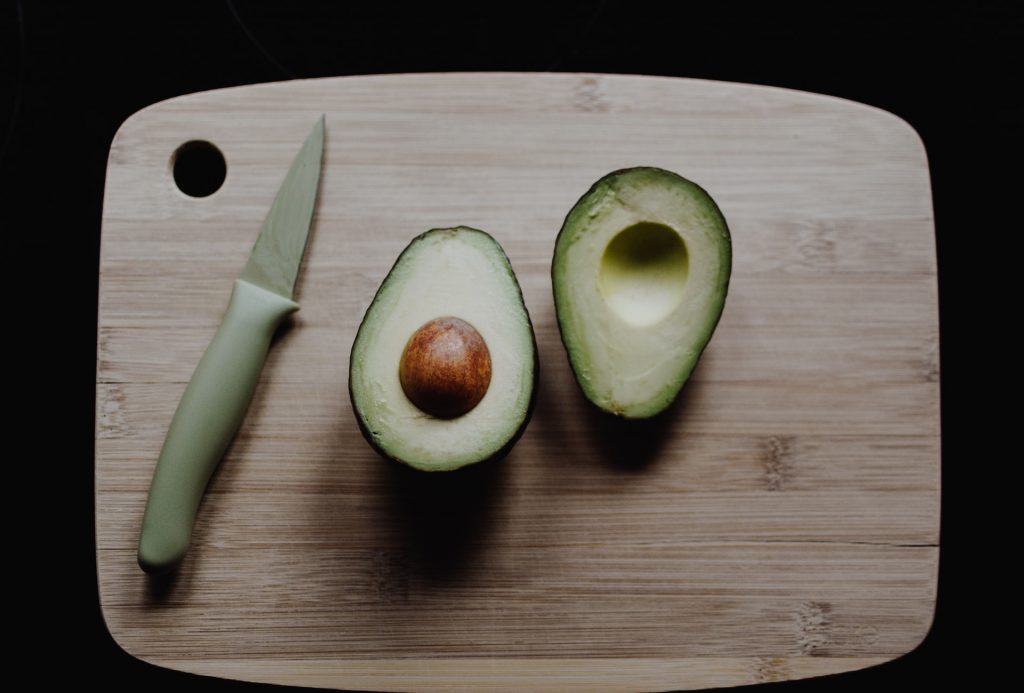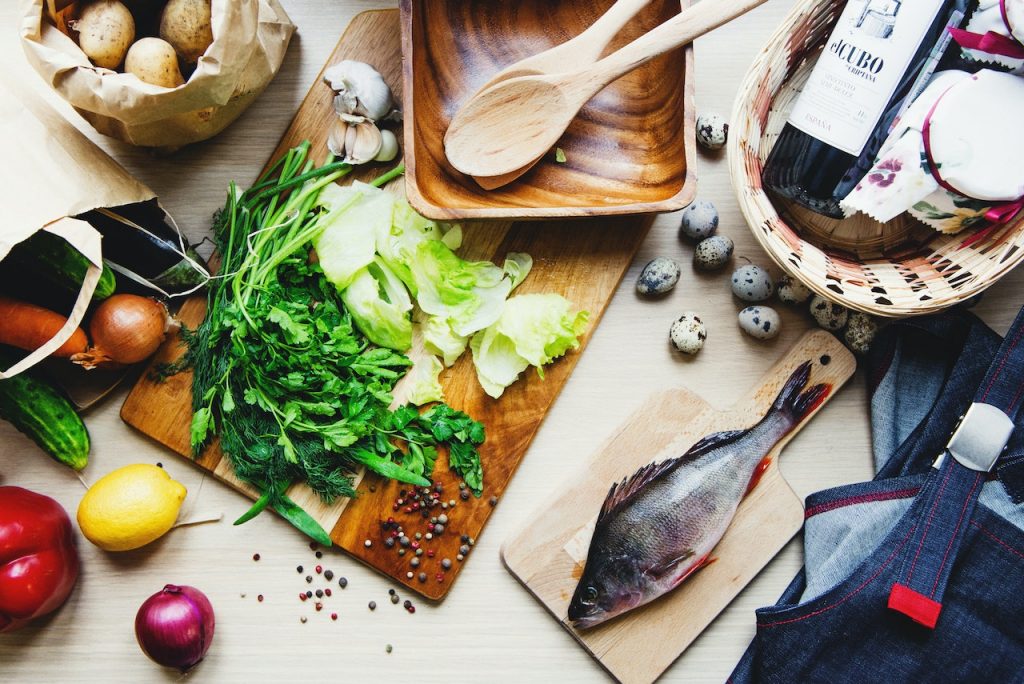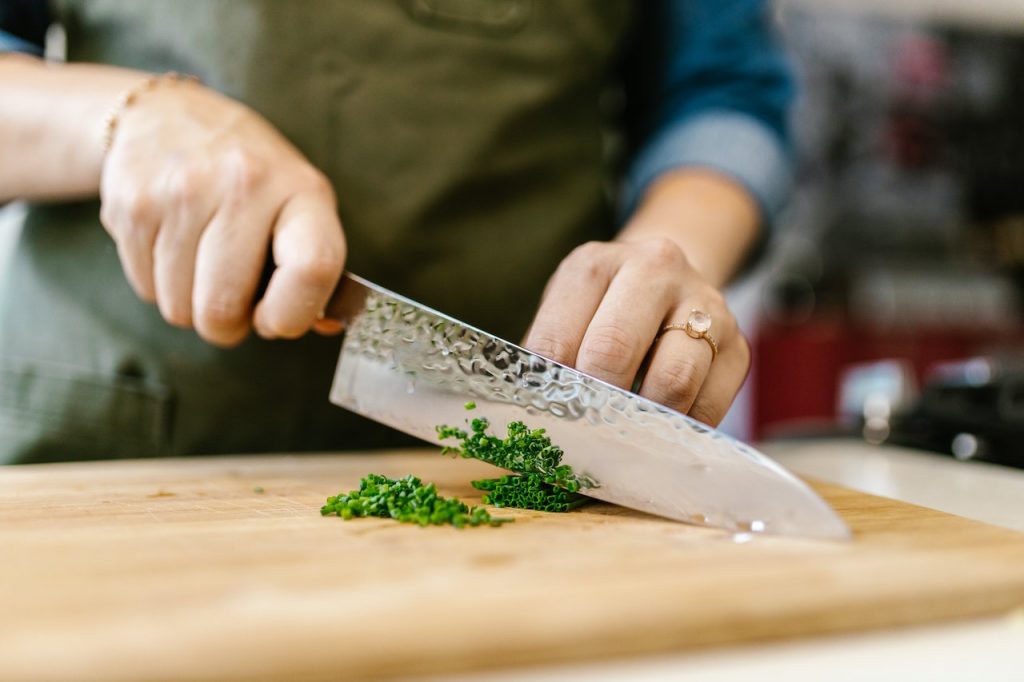Bamboo cutting boards are a popular choice for many people because they’re eco-friendly with a natural look and feel. However, there are several reasons why you should avoid using them in your kitchen. This blog post will discuss the dangers of bamboo cutting boards and why you should choose a different material.
What Exactly Are Bamboo Cutting Boards?

As the name implies, bamboo cutting boards are made of bamboo stalks, which have been finely crafted and glued together in layers to provide a strong surface that is naturally antibacterial, resistant to scratches and knife marks, and perfect for everyday use.
It is light enough to hang easily on the wall; these cutting boards also tend to be less expensive than those made of more conventional materials. Plus, they look great in both modern and traditional kitchens alike.
Why Are Bamboo Cutting Boards Bad?

Although bamboo cutting boards might seem like a great idea, they come with several risks to be aware of.
➥Bacteria and Mold Growth
Among the reasons why are bamboo cutting boards bad is that they are highly prone to bacteria and mold growth. Bamboo is naturally porous, so it can absorb liquids and other substances easily. Thus it creates an ideal environment for bacteria and mold to grow. This can cause cross-contamination, leading to food poisoning or other food-related illnesses. In order to prevent cross-contamination, it is important to thoroughly clean and sanitize bamboo cutting boards regularly.
➥Difficulty Cleaning
The porous nature of bamboo also makes it difficult to clean properly. Thus, making it more likely for bacteria and mold to linger after cleaning. Bacteria and mold on a cutting board can be unsightly and unhealthy, so choose one that is easy to clean and maintain.
➥Durability
Another disadvantage of using a bamboo cutting board is that it is not as durable as other materials, such as plastic or hardwood. Bamboo can easily be scratched or gouged, making it more susceptible to bacterial growth and cross-contamination of food products.
➥Abrasiveness
Another risk associated with bamboo cutting boards is their abrasiveness. Because they are made of natural fibers, they can be rough on knives and easily dull their blades over time.
➥Fracture Easily
Bamboo can splinter or fracture easily over time, making it a hazardous material around knives. In addition, bamboo cutting boards cannot be used in a microwave, as the heat can cause them to warp and crack.
As a result of its potential danger when used as a cutting surface, experts highly recommend avoiding bamboo cutting boards altogether.
Other Types of Cutting Boards

Here are other cutting boards types that you can use aside from bamboo boards.
🔴Wood Cutting Boards
Wood cutting boards are the classic choice for many home cooks—they’re durable and can handle plenty of wear and tear without showing signs of damage. Wood cutting boards also come in various wood types, with maple being the most popular. Maple is great because it’s strong enough to stand up to heavy use while still being gentle enough on your knives, so they don’t get dull quickly. Just be sure to oil your wood boards regularly with mineral oil or beeswax to keep them looking their best!
🔴Plastic Cutting Board
A plastic cutting board is another great option for busy cooks who need something that won’t require a lot of maintenance or upkeep. The plastic board is much easier on your knives than wooden or bamboo boards, so they won’t get dull as quickly; plus, plastic is dishwasher-safe, making clean-up a breeze! The downside to plastic cutting boards, however, is that they tend to show more wear and tear more easily than other materials, so you may have to replace them more often.
🔴Glass Cutting Boards
Glass cutting boards are perfect if you want something sleek and modern in your kitchen. Glass can be tempered to withstand heat and sharp blades without being damaged or warping over time, like wood or plastic can. However, glass tends to be slippery, so it can be difficult to keep items from sliding off the board when you’re working with them—but if you don’t mind that inconvenience, then glass could be a good option for you!
🔴Ceramic Cutting Boards
Ceramic cutting boards are great if you’re looking for something with a bit more style. Ceramic is easy to clean and doesn’t require any maintenance, plus it won’t dull your knives as quickly as other materials might. However, ceramics can be extremely heavy—especially when wet—so they may not be the best choice for someone who needs to move their cutting board often.
🔴Hard Rubber Boards
Finally, hard rubber cutting boards are an excellent choice for those who want something that is both durable and gentle on their knives. Rubber cutting boards have all the advantages of plastic without many shortcomings—they won’t show wear and tear easily, yet they’re still easy to clean up. Hard rubber boards are even dishwasher-safe, so they make quick work of clean-up duties!
When searching for an alternative material for your next cutting board, consider these four safe options—plastic, wood, and glass—all of which deliver convenience without compromising on hygiene standards!
Choosing the Right Wood-Cutting Board
You have quite a few options if you’re in the market for a new cutting board. As mentioned above, there are plastic boards, glass boards, hard rubber, and ceramic ones. But if you’re looking for a cutting board that will last for years, wood is the way to go. Here are some tips to help you choose the best wooden cutting board for your kitchen.
🔪Durability
When shopping for a wood cutting board, durability should be at the top of your list. Look for boards made from hardwoods such as maple or walnut. Hardwood is much more durable than softwood and won’t easily dent or crack as softer woods can. Additionally, look for cutting boards sealed with food-safe mineral oil or beeswax, so they don’t absorb moisture or bacteria.
🔪Size Matters
When you choose a wooden cutting board, the size of the board depends on how much food you prepare on it and where it will be stored in your kitchen when not in use. If you’re going to be using it exclusively for chopping vegetables and fruits, a small board would be sufficient. However, if you plan on using it to carve meats and poultry, opt for something larger so you can work with bigger items without crowding your workspace.
🔪Stability Matters Too
Stability is essential when working with knives and other sharp objects in the kitchen. That’s why you should look for wooden cutting boards with non-slip feet or rubber mats underneath them, so they stay firmly in place while in use. These mats also help protect your counters from scratches caused by sliding the board around while preparing meals.
🔪Wood Type
When it comes to choosing the right wood type, there are several options available. The most popular woods used in making cutting boards are maple, cherry, walnut, and teak. Each one has its own unique characteristics that can make it better suited for certain tasks than others. Maple is more affordable and resists staining well, while cherry is harder and more durable but can stain easily. Walnut is strong yet light in weight, while teak is an extremely hardwood that offers good resistance to bacteria growth but can be pricey.
How to Take Care of Your Cutting Board

Cutting boards are a kitchen essential. They’re used for everything from chopping vegetables to slicing meat. But, as important as they are, cutting boards require proper care and maintenance to stay safe and sanitary. Here’s a step-by-step guide on how to take good care of your cutting board.
1. Cleaning
Hot water and soap are the best way to clean your cutting board. Rinse the board off with hot water after each use, then scrub it down with a sponge or cloth soaked in warm soapy water. Be sure to get all nooks and crannies, such as the grooves around the edges of some cutting boards. Once you’ve scrubbed it down, rinse the cutting board with hot water and dry it off with a towel or paper towel.
2. Sanitizing
In addition to regular cleaning, you should sanitize your cutting board regularly (at least every few weeks). To do this, fill a spray bottle with white vinegar and spritz it generously onto both sides of the board. Let it sit for five minutes before wiping it down with a damp cloth or sponge. You can also use a diluted bleach solution (1 teaspoon per gallon of water) instead of white vinegar if you prefer—just make sure to rinse the board thoroughly afterward!
3. Oiling
Another important step in taking care of your cutting board is oiling it regularly. Oiling your cutting board helps keep it hydrated so that it doesn’t dry out and crack over time. We recommend using food-grade mineral oil that is safe for wood and plastic materials, as these are the most common cutting boards found in kitchens today. Apply a thin layer of oil with a soft cloth and let it sit overnight before wiping off any excess with a dry cloth and putting away the cutting board until the next use.
4. Maintenance
Keeping your cutting board in top condition is essential to maintain its integrity over time. To do this, apply mineral oil or food-grade mineral wax once every couple of months or so—this will help prevent cracking and warping due to moisture absorption or heat damage from knives scraping against their surface. Additionally, make sure to store your cutting board somewhere cool and dry when not in use—this will help ensure it lasts longer!
Taking care of your cutting boards doesn’t have to be difficult—all it takes is regular sanitizing, oiling, and cleaning!
The Right Way To Store Your Cutting Board

It’s essential to take good care of your cutting board so that it lasts for a long time and remains hygienic. Many people don’t realize there is a specific way to store your cutting board. Below are some tips on how to store your cutting board properly so you can get the most out of it.
✅Choosing the Right Spot
The first step in storing your cutting board is finding the right spot. You want to ensure you have enough space for both sides of the board and easy access when you need it. If possible, choose a spot near where you will be using it, such as near the sink or stovetop. This will save you time when prepping meals and help keep everything organized in one area.
✅Cleaning and Sanitizing Before Storing
It’s essential that you clean and sanitizes your cutting board before storing it away. This will help prevent bacteria from growing on the surface while it’s stored away. You should use mild dish soap with hot water to clean off any food particles. Then, use an antibacterial spray or wipe it down with white vinegar and water to sanitize it before drying it off completely with a clean cloth or paper towel.
✅Using Cutting Board Racks/Holders
Once your cutting board has been cleaned and dried, you can store it away using a wall-mounted rack or countertop holder designed specifically for cutting boards. These racks/holders provide easy access when you need them quickly but keep them securely stored away when not in use. They help keep your counters clutter-free and protect against scratches or other damage that could occur if stored without a holder or rack.
By following these steps and properly storing your cutting board, you can help ensure it lasts a long time while also helping to keep your kitchen clean and safe.
Frequently Asked Questions
Why Are Bamboo Cutting Boards Bad?
Aside from the potential issues mentioned above, bamboo chopping blocks contain natural oils that can affect the flavor of certain foods if not washed thoroughly after every use.
What is the best knife-cutting board?
The best knife-cutting board is made from a solid material such as hardwood, plastic, or composite. These materials are durable and can withstand regular use with sharp knives better than softer materials such as bamboo. These boards should also be oiled regularly for optimal performance over time.
Can a bamboo cutting board cause damage to the knife?
A bamboo cutting board can damage a knife, but it ultimately depends on the quality of the bamboo and the type of knife. Bamboo is naturally softer than hardwoods, and because of this, knives may become dulled rather quickly if it is used regularly on a low-quality cutting board. It’s also important to consider whether your knives are made from stainless steel or carbon steel.
Carbon steel will show more wear on any cutting surface you use, so keep an eye on your blades for any signs of distress. Regularly sharpening and honing knives will help reduce the amount of wear that’s caused by a bamboo cutting board.
Do chefs use bamboo cutting boards?
Many chefs do use bamboo cutting boards due to their lightweight and the fact that they are renewable. However, chefs must be mindful of how often they use their bamboo cutting boards and ensure that they are cleaned and sanitized properly before storing them. This will help reduce any potential damage or contamination caused by bacteria. It’s also best to opt for a higher-quality bamboo cutting board, as these can withstand regular use much better than the lower-priced models.
What causes a cutting board to be toxic?
Cutting boards can be toxic when they are not properly washed and sanitized before each use. It absorb bacteria and other germs that can accumulate on the surface of an unclean cutting board, causing it to become a source of contamination.
Additionally, some materials, such as plastic, are known to leach chemicals into food when used for cutting.
How long does a bamboo cutting board last?
A bamboo cutting board’s longevity depends on how it’s taken care of and stored. With proper cleaning, oiling, and storage methods, a high-quality bamboo cutting board can last many years.
How often should you throw out cutting boards?
The frequency of throwing out a cutting board really depends on how it’s taken care of and stored. If you follow the steps mentioned above, you should be able to extend the life of your cutting board for several years before needing to replace it. Additionally, if you notice any deep cuts, splinters, or warping in the wood after regular use, it is best to replace it immediately.
Finally, if you notice any discoloration or foul odors from the cutting board, these are signs of bacteria and food contamination, and you should discard them immediately.
Final Words
So why are bamboo cutting boards bad? Bamboo is not as durable as other hardwoods and may be more prone to bacteria growth due to its porous nature. Plus, bamboo can dull knives faster than other materials like plastic or wood. For these reasons, it’s best to avoid using bamboo cutting boards in the kitchen.
